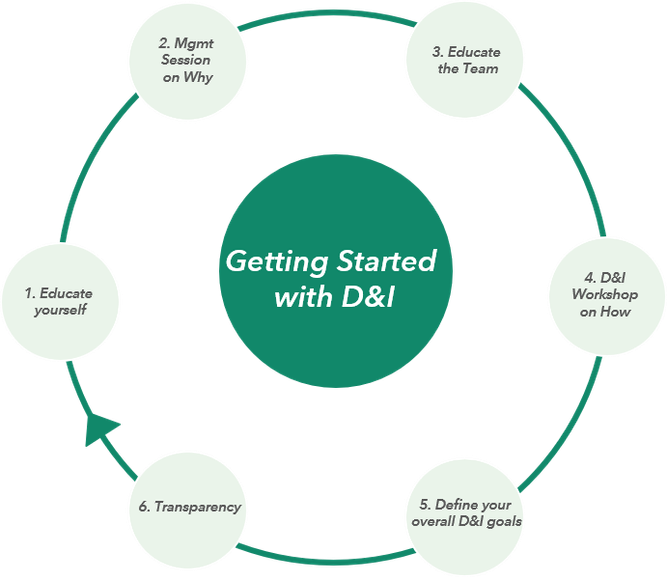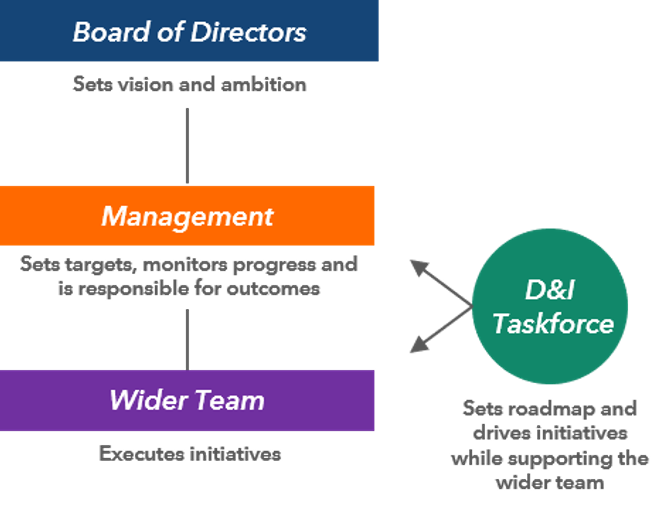Diversity, Equity & Inclusion
Kinnevik’s greatest asset is and has always been our people - in our own organisation and in our portfolio. As such, attracting and retaining top talent is a key priority. Kinnevik regards diversity, equity and inclusion as core levers for value creation, and we make full use of the opportunities that arise from employing a team with different backgrounds and perspectives.
Fulfilment of Kinnevik’s Diversity, Equity & Inclusion Targets 2023
1. 10% Female Capital Allocation
On a two-year rolling basis, 10 percent of new capital to be invested in female founded or led companies, from the 2019 Annual General Meeting (”AGM”) and onward
As more than 95 percent of global investments still go to companies with all-male founder and management teams, we believe there is good reason to continue pushing the industry towards closing the gender funding gap. Per year-end 2023, on a two-year rolling basis, 7 percent of Kinnevik’s investments into new companies was invested in female founded or led companies, and since the 2019 AGM, the share is 15 percent. For the follow-on investments made during 2022-23, 42 percent were made into businesses founded by women, and since the 2019 AGM, the share is 26 percent.
2. Follow-On Investments
Only make follow-on investments in companies that are making sufficient progress in relation to diversity and inclusion
Kinnevik has continued to make all follow-on investments in portfolio companies conditional upon satisfactory progress on DEI (diversity, equity and inclusion). All potential follow-on investments are evaluated on DEI performance as part of the investment evaluation process. During 2023, 91 percent of our portfolio companies made progress on their respective DEI ambitions and gaps.
3. Ensure Portfolio Progress
Achieve annual incremental progress across portfolio on relevant diversity, equity and inclusion efforts
For 2023, we set portfolio progress targets aimed at driving strategic DEI engagement. To achieve these, we have actively supported our companies with recruitment, talent management and best practice sharing between companies, among other initiatives. As a result, by the end of 2023, 81 percent of our portfolio companies had implemented DEI data collection processes (target 70 percent), 94 percent had a relevant DEI strategy (target 80 percent) and 84 percent had set DEI targets (target 80 percent).
Kinnevik's D&I Toolkit
A practical guidebook on how to increase diversity and create a more inclusive workplace
Kinnevik invests in the power of technology to make life better for people around the world, by providing more and better choice. To do that, we and the businesses we invest in, need to truly understand their customers. This is why it is vital that our organisation and portfolio companies’ teams reflect their diverse customer base. Improving diversity and inclusion (“D&I”) will bring clear business benefits through improved financial performance, a higher degree of innovation, better decision-making and value creation over the long-term.
To support our investee companies and their management teams on the journey towards creating a more inclusive culture and increasingly diverse teams, we have created a D&I Toolkit (the ”Toolkit”). The Toolkit is meant to inspire and serve as a practical guide on how to structure and initiate D&I efforts. While we recognize that there is no secret recipe for achieving D&I - all companies must assess their own needs and consider the relevant organisational context at hand - we believe the Toolkit includes many good first steps which anyone can implement.
The Toolkit comprises eight sections covering key D&I topics to consider at the outset of your D&I efforts. The first four sections focus on how to define your D&I ambitions, creating a baseline and ensuring you have processes to measure and assess progress. The last four sections focus on concrete actions to help you achieve your ambitions and build a sustainable and inclusive workplace.
Below is a smaller extract of the full Toolkit provided to our portfolio companies.
Believing you are meritocratic will not get you anywhere. Improving D&I, and specifically creating an inclusive culture, is a long-term project dependent on people believing in the intrinsic value of D&I.

